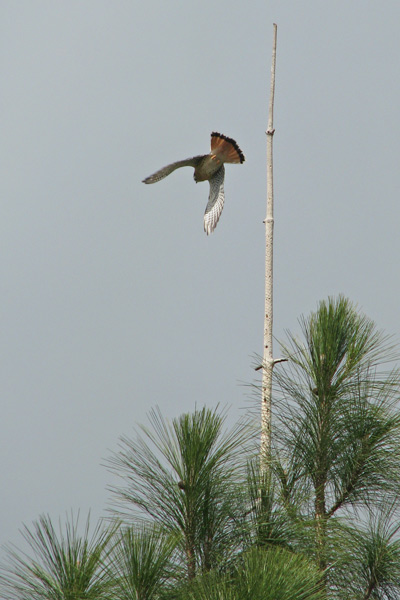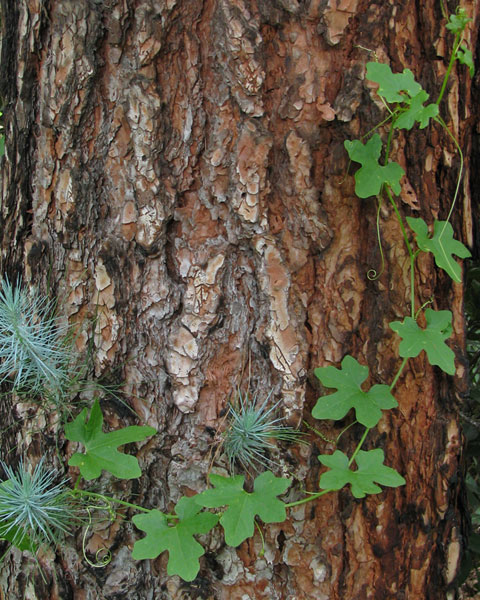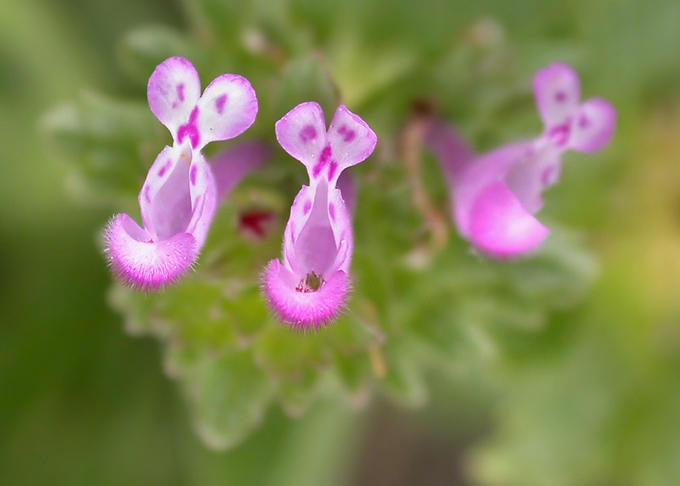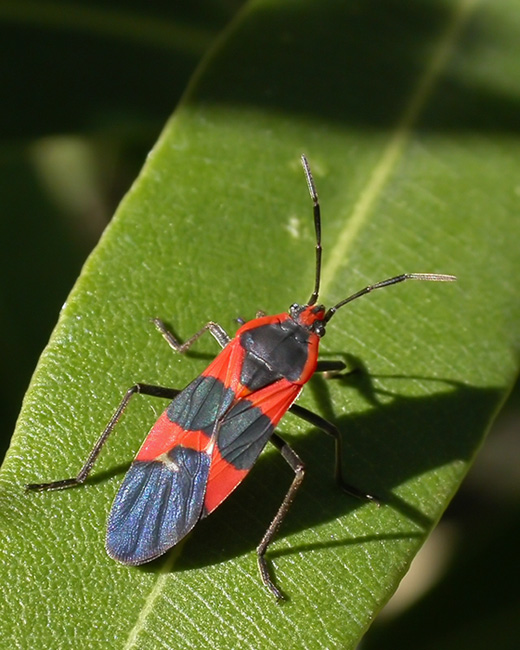The thing about southern California weather is that it’s… well… VARIABLE. “Unpredictable” would be another good word that comes to mind. Yesterday, here in the canyon, it was foggy, cold, windy and the heavy, dark gray clouds unleashed some much needed rain. But, today, the sun is shining, hardly a breeze is stirring, insects and birds are winging their way through blue skies filled with puffy white clouds.
One of my favorite occasional pastimes is to go back into my photo archives and see what was happening in my world on that same day in previous years. As I’ve been a bit busy lately and not able to find much time for wandering around with my camera, I thought I might share a few stories with you from a past February…

February 13, 2009: Dusting of snow on the foothills above our home.
Snow!!! OK, OK, I know many of you who live in cold-weather states are laughing at my excitement over this admittedly light dusting of the white stuff. But, these foothills just above our home are only about 2000 ft. in elevation and it rarely gets cold enough at that altitude for snow of any kind. In the seven years that I’ve lived here, I could count on one hand the days that I’ve seen snow in the hills. As I recall, there was deep fog and clouds blanketing the canyon for most of the day, obscuring much of anything from view. Near sunset (as is often the case), the light finally broke through the cloud layer and the fog rolled away revealing this beautiful backdrop. Needless to say, I immediately put on my shoes and set out for a nice long walk up the fire road behind our house. I took many photos and tried to absorb as much of this unique February afternoon as I could. As I headed home for the evening, the snow was already disappearing fast…
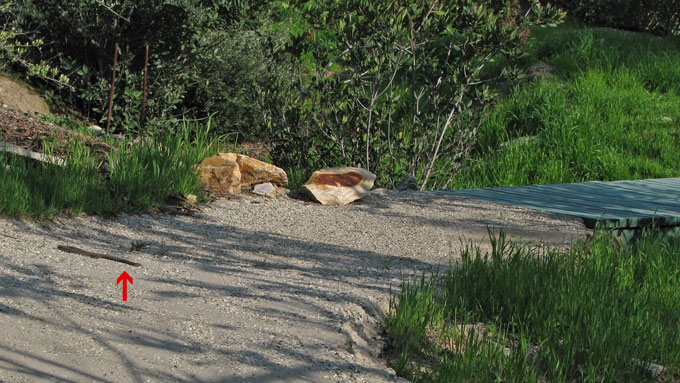
February 25, 2009: Juvenile Southern Pacific Rattlesnake (Crotalus oreganus helleri) *Be sure to click on the image to see a close-up of this beautiful snake!*
Snake!!! Yup. For those of you who thought that late February was not “rattlesnake weather” — think again! It was a mere two weeks after the aforementioned snowy day and the sun was shining brightly, but temps were still quite cool (a high of 60° according to the weather archives I looked at). In any event, I certainly was not thinking about the possibility of basking snakes. In fact, I wasn’t watching the ground at all as I walked down the small path that leads behind our cabin. But, via some sort of sixth sense, I suddenly felt compelled to look down. With one foot still hovering in mid-air, I froze in that position, trying to process the realization that there was a rattlesnake head directly below the impending trajectory of my shoe. The juvenile snake had been stretched across part of the pathway, its tail end obscured in the grass. (So, it was not quite as glaringly obvious as the position shown in the photo, which was taken several minutes after the initial ordeal.) I literally hopped backwards a few times — balancing on one foot! — and then slowly made my way around the still motionless snake, giving it a very wide berth.
Some of you might be thinking, “What?! It didn’t strike at you?” or “What?! Didn’t you hear it rattling first?” After many years now of regular encounters with rattlesnakes, I have formed two distinct impressions… First, they are shy and not easily stirred to aggression. I do not believe that one would strike unless they felt they had no other choice. (Frankly, in this case, I think the snake had every right to try and bite me, considering that my foot was on a collision course with its head — but for whatever reason, it didn’t. Too cold for such a quick response, maybe?) Second, despite their reputation for rattling, I have rarely heard them actually do this, even when approached very closely. There have only been two times that I’ve heard them rattle. Once, when one was being cornered and then lifted with a snake handling tool to be relocated, and then another time when I encountered one half-way out of an abandoned mammal hole. (Ground squirrel? skunk? gopher?) It quickly retreated into the hole and then continued to rattle at me for a really long time… I’m still uncertain as to why. My guess is that it was feeling especially vulnerable. (Perhaps it was mid-way through digesting a big meal? In the process of shedding its skin?) Whatever its reasons were, I was especially wary and careful around that area for several days following, as I had no desire to startle that particularly sensitive rattlesnake again.
Southern California is sometimes an overwhelmingly hot and uncomfortable place to live, and, yes, we do have annual high winds, many devastating wildfires and the occasional earthquake. But, there is simply no denying the truly marvelous moments that I have had living here… especially the unexpected ones such as these.
(If you would like to know more about the local species of rattlesnake, please check out this great page of photos, videos, sound clips and fascinating info from the brilliant website, California Herps. I cannot speak highly enough about this wonderful regional resource for learning more about amphibians and reptiles!)


